World Day for Audiovisual Heritage & Autumn Film School
Screenings of experimental films from Light Cone archive
Friday, 27 October & Saturady, 28 October 2023, 7 pm
Lecture by Mariya Nikiforova: Friday, 27 October, 5:30 pm
Slovenian Cinematheque, Miklošičeva 28, Ljubljana
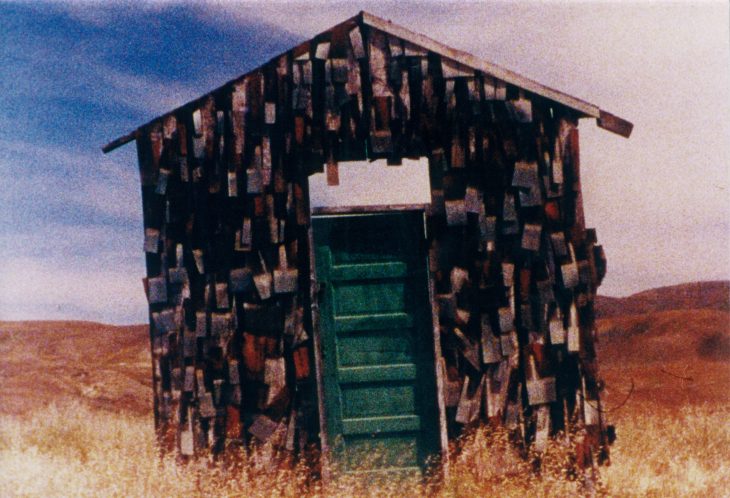
On the UNESCO World Day of AV Heritage, October 27, SCCA traditionally prepares a screening at the Slovenian Cinematheque. This year, we connected the program with the Autumn Film School and we present the distribution company and archive Light Cone from Paris. It is one of the richest and most important archives of experimental and avant-garde film in Europe. Mariya Nikiforova, film director, curator and head of the film collection and documentation center at Light Cone, has put together two programs of 16mm and 35mm experimental films made over a span of almost a hundred years, between 1927 and 2016. The first programem Paris, Capital of the 20th Century? looks around the intellectual and artistic capital of the time, while the second program, entitled Object Relations, flirts with psychoanalysis and shows the metaphorical power of objects on the canvas. The curator will present both programs at the screening in the Slovenian Cinematheque on Friday, October 27 and Saturday, October 28, both times at 7 pm.
On Friday, October 27 at 5:30 pm, Mariya Nikiforova will also lecture on the interplay of photochemical and digital practices in contemporary experimental film.
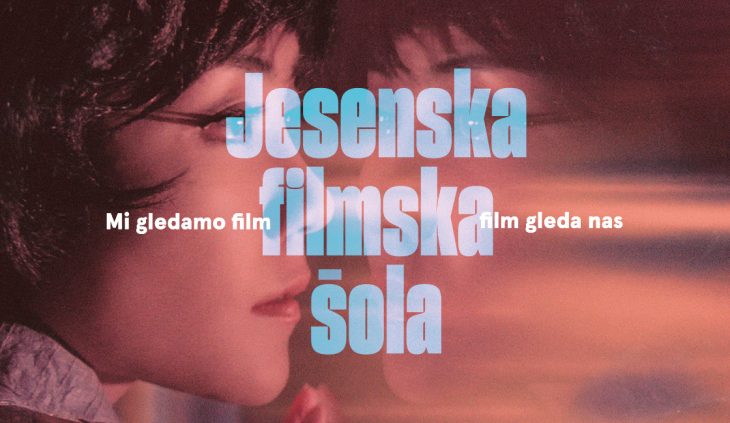
» Autumn Film School programme (in Slovenian)
PROGRAMME
Mariya Nikiforova – Hybrid Forms: The Interplay of Photochemical and Digital Practices in Contemporary Experimental Film
Lecture
Friday, 27 October 2023, 5:30 pm
The contribution will focus on the different ways in which digital and photochemical practices and aesthetics have become intermeshed within contemporary experimental cinema, resulting in myriad hybrid forms that, consciously or not, speak to the present technological moment. The main attention will be devoted to the speaker’s experience as Light Cone’s collection manager as well as the coordinator of the post-production residency Atelier 105.
Two experimental film programs from Light Cone (Paris)
Curator: Mariya Nikiforova
Films by: Eugène Deslaw (FR), Hy Hirsh (FR), Luc Meichler in Gisèle Rapp-Meichler (FR),
Teo Hernandez (FR), Nicolas Rey (FR), Eve Heller (ZDA), Charlotte Pryce (ZDA), Gordon-Matta Clark (ZDA), Inger Lise Hansen (ZDA), Matthias Müller (DE), Antoinette Zwirchmayr (AT), Sarah Pucill (VB), Monika Schwitte (DE), Oskar Fischinger (DE)
Light Cone, a distribution cooperative of experimental films, was founded in 1982 in the vein of other filmmakers’ co-ops that had sprung up mostly in the English-speaking world in the 1960s and 1970s. Compared with its humble beginnings in its founders’ tiny Parisian apartment, since then, the organization has grown into quite a behemoth. Many of the people that have traversed this place – staff, members of the board of directors, affiliated filmmakers and programmers, or simply friends – have enriched it with their own visions of what experimental cinema is or can be, leaving marks of their obsessions in the ever-growing collection, which counts today over 6,500 film titles from many parts of the world. Without a doubt, lacunae will always remain, but there is a desire to identify and fill them, where this is possible. In the words of Miles McKane (co-founder, with yann beauvais, who returned to present an anniversary program in 2022): “The collection is organic in its structure, it grows and expands, but not in a linear way; not merely moving towards the newest works but exploring and rediscovering works from the past and from the margins of history, pioneers who were overlooked or misunderstood.”
This uneven, organic growth is what’s wonderful about Light Cone, since it allows for many angles of approach, countless possible dialogues among films coming from different contexts, infinite “histories” of experimental cinema. The programs presented here propose two such subjective readings, both constructed around certain kinds of obsessions. First, we explore the city of Paris – one of the most fetishized cities in the world – as it has been represented throughout the 20th century. And second, in a much more free-association program, we confront recurrent images that might serve as metaphors or symbols for latent memories, forming shaky bridges – or passages – between the conscious and the subconscious worlds, between childhood and adulthood. Both programs are composed exclusively of photochemical formats (16 mm and 35 mm) – not only to vaunt Light Cone’s sizeable collection of prints, but also in keeping with the themes, as celluloid was the only projection format throughout the 20th century, and since its downfall at the beginning of the 21st, it continues to haunt cinema…
Mariya Nikiforova
Friday, 27 October 2023, 7pm
Paris, Capital of the 20th Century?
Beyond its appealing veneer, Paris has always been a site of great intellectual and artistic tensions. It has also historically been a place of political refuge, attracting many foreign thinkers and artists. Thus, the melting-pot city has been traversed by such a quantity of gazes and ideas that every corner seems to be charged with historic or symbolic significance. Presented here is just a modest promenade around 20th-century Paris and the artistic passions that have animated it.
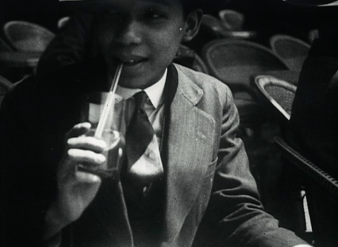
France, 1929-1930, 35 mm, 1,37, b&w, sound (no dialogues), 15′
Around the time when Walter Benjamin began to work on his project about the passages of Paris, the Ukrainian-born Eugène Deslaw (Yevhen Slabchenko) turned his avant-gardist gaze to the diverse bohemian scene of the cafes and artist studios of the Left Bank. With appearances by Luis Buñuel, Tsuguharu Foujita, Filippo Marinetti, Enrico Prampolini, and Luigi Russolo, among others.
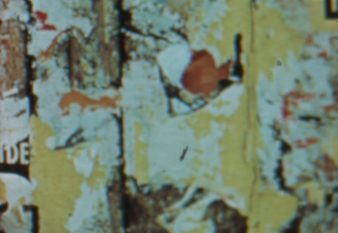
France, 1958-1959, 16 mm, 1,37, color, sound (no dialogues), 8′
To make this joyful abstract dance, the American “expat” Hy Hirsh must surely have been inspired by Parisian “Affichiste” artists who turned wall advertisements into abstract décollages in the 1950s. This early street-art practice was close in spirit to the Letterist movement, which also gave birth to Situationism.
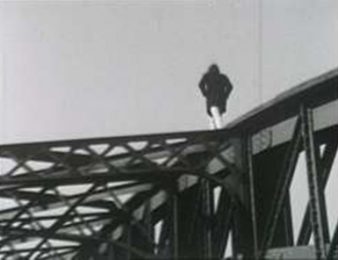
France, 1976-1977, 16 mm, 1,37, b&w, sound (with subtitled dialogues), 21′
The “last Situationist film-essay”, according to Nicole Brenez. Mixing readings of thinkers like Lévi-Strauss, Debord, and Deleuze & Guattari, the filmmaking duo, originally from the Alsace region, concentrate on a thin island in the Seine that is traversed by the Allée des Cygnes (Path of the Swans), from which comes the pun of the title – Path of the Signs.
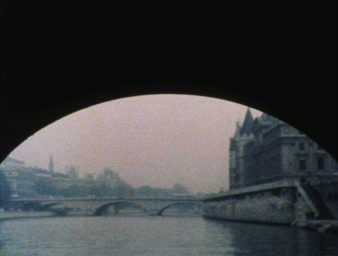
France, 1982-1983, 16 mm, 1,37, color, silent, 11′
From the Swan Island we jump to the banks of the Seine near the Tuileries Garden, where the Mexican-born filmmaker, who had settled in Paris in the sixties, uses his unique Super 8 filming technique to capture the flux of the river as a sculptural object. “With each vibration of our bodies, images gush forth.”
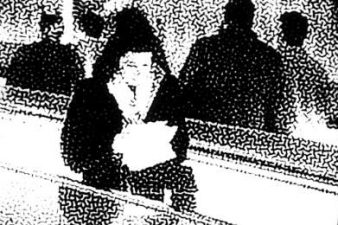
France, 1996, 16mm, 1,37, b&w, sound (no dialogues), 10′
The program comes full circle, returning to Montparnasse – but this time, underground, hinting at the drastic transformation of this formerly bohemian neighborhood. The French-born filmmaker associated with the scene of artist-run film laboratories (specifically, L’Abominable) uses photochemical techniques to make a caustic Situationist-inspired critique of 20th-century urbanism.
Saturday, 28 October 2023, 7pm
Object Relations
Antonin Artaud has said, “If the cinema is not made to interpret dreams or what pertains to the realm of dreams in conscious life, it does not exist.” The link between cinema and psychoanalysis, and the metaphoric power of objects on the screen, accentuated by the close-up, have been explored and theorized throughout film history. Inspired by this idea, this program invents a psychic trajectory from object to object, metaphor to metaphor, through a chain of connections that activate powerful symbols (fire, water, house, or milk), perhaps, all the way to the revelation of a taboo.
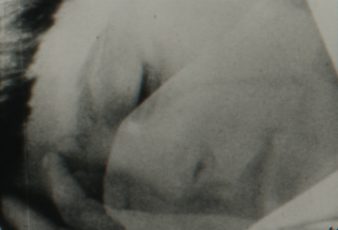
USA, 2001, 16 mm, 1,37, b&w, silent, 5′
“The world as seen in a teardrop of milk. I set out to make a film about how unwitting constellations of meaning rise to a surface of understanding at a pace outside of worldly time. This premise became a self-fulfilling prophecy. An unexpected interior began to unfold, made palpable by a trauma that remains abstract.” – E. H.
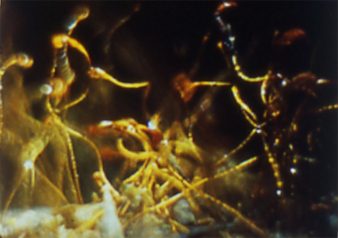
USA, 2013, 16 mm, 1,37, color, silent, 3′
“Witness an alchemist’s spell: the transmutation of light into substance: a glimpse of gold.” – C. P.
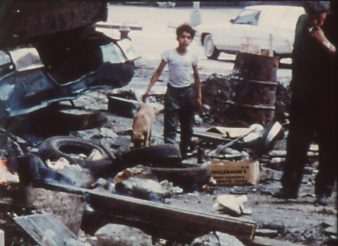
USA, 1971, 16 mm, 1,37, color and b&w, silent, 10′
The artist creates a sculpture, a miniature wall for an ephemeral refuge, from scrap materials found under the Brooklyn Bridge, accompanied by a mysterious child.
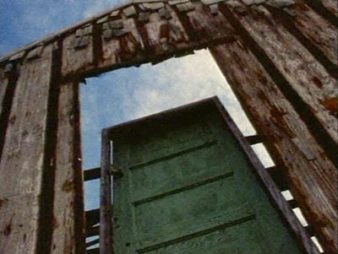
USA, 1998, 16 mm, 1,37, color, sound (no dialogues), 7’30
“… a film which attempts to reveal the private and hidden layers of our habitation … a film about time and processes, about disintegration and construction.” – I. L. H.
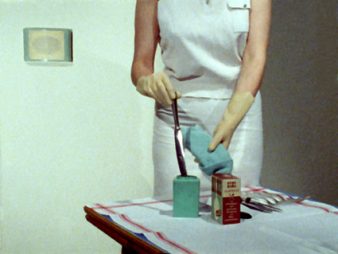
Germany, 1995, 16 mm, 1,37, color, sound, 14′
An intertextual coming-of-age story that mixes ’60s aesthetics, home movies, popular culture, and borrowed images from experimental and auteur cinema. “Nearly wordless, Müller proceeds by analogy and synecdoche, gathering up presicely framed moments within the home and collecting them as evidence.” – Mike Hoolboom
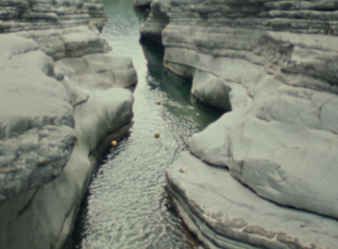
Austria , 2016, 16 mm, 1,37, color, silent, 4’20
“…a sequence of dreamlike scenes unfolds quietly. Set in an otherworldly layered landscape of rock formations by a pristine mountain spring, an atmosphere of eerie feminity pervades the images.” – Julia Dossi
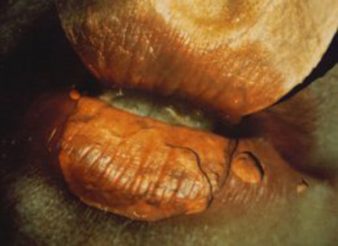
UK, 1993, 16 mm, 1,37, color, sound (no dialogues), 10′
“… an evocative journey from surface to interior – a black-coated mirror, the hollow of a bowl, a cavernous throat, a brush demarcates a line of lip on a flat surface, a mouth doubles up with the bowl and is virtually spoon-fed till it chokes.” – S.P.
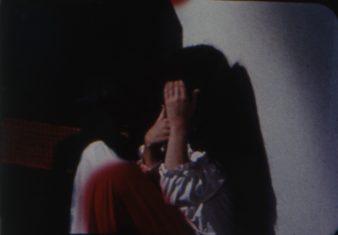
Germany, 1994, 16 mm, 1,37, color, silent, 2′
“I recommend to the viewers of my films that they simply watch, without wanting to understand anything, and go on an optic trip with these silent, often very rapid images.” – M.S.
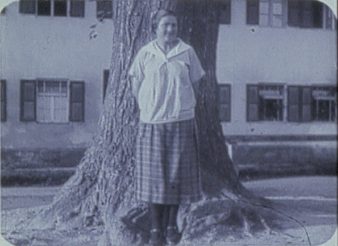
Germany,1927, 35 mm, 1,37, b&w, silent, 5′
A gentle portrait of the German countryside between two wars.
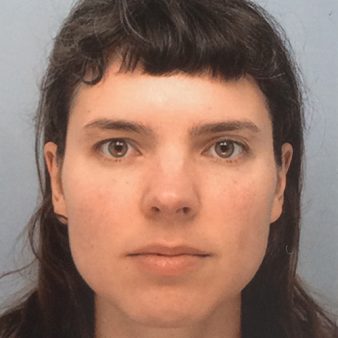 Marija Nikiforova (Saint-Petersburg, 1986) is a researcher, programmer and filmmaker. After studying at Emerson College in Boston, she received a Master’s degree from the Sorbonne-Nouvelle University in 2016, with a research project on artist-run photochemical film laboratories. She is currently pursuing a doctorate at Paris 8 University with a dissertation on the heritage of Soviet urbanism in cinema and artists’ film and video. She is a member of the artist-run laboratory Navire Argo (L’Abominable), where she has completed several short films. Since 2018, she is also the Collection Manager at Light Cone (Paris), an organization dedicated to the distribution of experimental cinema. (Photo: personal archive)
Marija Nikiforova (Saint-Petersburg, 1986) is a researcher, programmer and filmmaker. After studying at Emerson College in Boston, she received a Master’s degree from the Sorbonne-Nouvelle University in 2016, with a research project on artist-run photochemical film laboratories. She is currently pursuing a doctorate at Paris 8 University with a dissertation on the heritage of Soviet urbanism in cinema and artists’ film and video. She is a member of the artist-run laboratory Navire Argo (L’Abominable), where she has completed several short films. Since 2018, she is also the Collection Manager at Light Cone (Paris), an organization dedicated to the distribution of experimental cinema. (Photo: personal archive)
Production: SCCA-Ljubljana/DIVA Station and Slovenian Cinematheque
Supported by: Ministry of Culture of the Republic of Slovenia and City of Ljubljana – Department for Culture, French Institute in Slovenia, Air France
![]()
![]()
![]()
![]()
![]()
![]()
![]()
![]()
